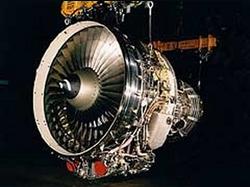Thu, Jan 30, 2014
Valued At More Than $1.2 Billion U.S., Deliveries Scheduled To Begin In Mid-2014
Lion Group has selected CFM International’s CFM56-5B engine to power 60 firm Airbus A320ceo (current engine option) aircraft. The agreement is valued at more than $1.2 billion U.S. at list price; the aircraft order was announced in March 2013. Jakarta, Indonesia-based Lion Group been a CFM customer since the year 2000 and recently took delivery of its 100th CFM56-7B-powered Boeing 737 aircraft

"Our selection of the CFM56-5B engine for the A320ceos was an obvious choice for us,” said Rusdi Kirana, Lion Group founder and president director. "Although we are introducing a whole new engine type, it is coming from the same company that has been with us from the very beginning. Our relationship with CFM has grown as our airline has grown and we know first-hand that these engines will provide a world-class combination of economic efficiency, reliability, and time on wing that will help realize our plans for continued growth.“
“This new order is testament to the great relationship we have built with Lion Group,” said Jean-Paul Ebanga, president and CEO of CFM. “As we watch the explosive growth in commercial aviation in Asia, we are proud to be part of the Lion team as they help redefine the low-cost carrier model in this region.”
“The Lion Group management team has done a phenomenal job of putting this airline in the perfect position for sustainable growth over the long term,” said Kevin McAllister vice president of sales for CFM parent company GE Aviation. “Their acknowledgement of the value that CFM and the CFM56 product line bring to their operations is highly gratifying, and we look forward to the future with great anticipation.”
All of Lion Group’s new engines will be the CFM56-5B Performance Improvement Package (PIP) configuration. The PIP became the new production configuration for the CFM56-5B in 2011. The improvements, which is providing a 0.5% improvement in fuel burn, include hardware changes to the core, including new high-pressure turbine blade, as well as manufacturing changes the fan and compressor blades and vanes to improve performance retention. The engine maintains the same noise signature as the current production engine and meets current International Civil Aviation Organization (ICAO) Committee of Aviation Environmental Protection standards (CAEP /6) requirements.
More News
He Attempted To Restart The Engine Three Times. On The Third Restart Attempt, He Noticed That Flames Were Coming Out From The Right Wing Near The Fuel Cap Analysis: The pilot repor>[...]
Make Sure You NEVER Miss A New Story From Aero-News Network Do you ever feel like you never see posts from a certain person or page on Facebook or Instagram? Here’s how you c>[...]
From 2009 (YouTube Edition): Leading Air Show Performers Give Their Best Advice for Newcomers On December 6th through December 9th, the Paris Las Vegas Hotel hosted over 1,500 air >[...]
Aero Linx: NASA ASRS ASRS captures confidential reports, analyzes the resulting aviation safety data, and disseminates vital information to the aviation community. The ASRS is an i>[...]
“For our inaugural Pylon Racing Seminar in Roswell, we were thrilled to certify 60 pilots across our six closed-course pylon race classes. Not only did this year’s PRS >[...]
 NTSB Final Report: Rutan Long-EZ
NTSB Final Report: Rutan Long-EZ ANN FAQ: Turn On Post Notifications
ANN FAQ: Turn On Post Notifications Classic Aero-TV: ICAS Perspectives - Advice for New Air Show Performers
Classic Aero-TV: ICAS Perspectives - Advice for New Air Show Performers ANN's Daily Aero-Linx (06.28.25)
ANN's Daily Aero-Linx (06.28.25) Aero-News: Quote of the Day (06.28.25)
Aero-News: Quote of the Day (06.28.25)



